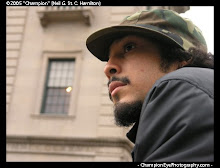Woodrow Wilson Triangle
This text is part of Parks’ Historical Signs Project and can be found posted within the park. Clason Point War Memorial
This monument honors the residents of Clason Point who gave their lives during World War I. The seven-foot high bronze sculptural relief of a female figure, by James Novelli (1885–1940), is set within an 11-foot tall, gray granite stele. The work was commissioned at a cost of $3,500 by the residents of Clason Point in 1928.
Clason Point is a community in the central Bronx bounded by White Plains Road and the Bruckner Expressway to the north, Pugsley’s Creek to the east, the East River to the south, and the Bronx River to the west. Early inhabitants were Siwanoy Native Americans, whose villages dotted the nearby shoreline of what is today the Bronx. European settlers dubbed the peninsula Cornell’s Neck (after local farmer Thomas Cornell), and it was later renamed for Isaac Clason, a wealthy local merchant.
The sculptor James Novelli was born in Sulmona, a province of Aquila, Italy, in 1885. His family settled in New York when he was five years old, and at an early age he impressed his teachers at P.S. 23 with his natural artistic skill. Novelli returned to Italy in 1903 to study, and while a student earned an honorable mention for his artwork submitted to the International Exposition in Paris, France, in 1906. He graduated from the Royal Academy of Rome in 1908.
Returning to New York, where he resided at West 23rd Street in Manhattan, Novelli was much in demand as a sculptor of funeral and public monuments. Besides this monument, he also created the Saratoga Park War Memorial (1921; stolen and destroyed in 2000) in Brooklyn, the Winfield War Memorial (1926) in Queens, and bronze mausoleum doors in Calvary Cemetery (1923) for which he won the Henry O. Avery Prize for sculpture. In the 1930s, Novelli worked on Parks monuments conservation crew. However, during the Great Depression, his own artistic career languished, and after growing increasingly despondent, Novelli took his own life in 1940.
The City acquired this modest triangle in 1912 through condemnation when it was laying out streets in the vicinity. It became parkland in 1927, and was named Woodrow Wilson Square (later modified to Triangle) after Woodrow Wilson (1856–1924), the 28th President of the United States. During his long and active career in and out of government, Wilson served as president of Princeton University (1902–1910), governor of New Jersey (1911–1913) and for two terms as President of the United States(1913–1921). He was actively involved in the World War I armistice and the creation of the League of Nations, and for his efforts was awarded the Nobel Peace Prize in 1919.
The Clason Point War Memorial includes inspirational quotations by presidents George Washington (1732–1799), Abraham Lincoln (1809–1865), William McKinley (1843–1901), and Wilson. The latter, alluding to the Wilson administration’s role in World War I and the Treaty of Versailles peace agreement, reads, “That the world may be made safe for democracy.”
In the fall of 2000, the Parks monuments crew cleaned the stele, and refinished the bronze relief by Novelli. Already containing a venerable American elm tree (Ulnus americana), and existing pagoda dogwoods (Cornus alternifolia) and a Douglas-fir (Pseudotsuga menziesii), the surrounding site was upgraded through a city-sponsored Greenstreets contract. The renovation included new sidewalks, sod, and the inclusion of an Eastern redbud flowering tree (Cercis canadensis), an Eastern redcedar shrub (Juniperus virginiana), fountain grass (Pennisetum setaceum), rose bay rhododendron, black-eyed susan flowers (Rudbeckia hirta), and a spreading English yew (Taxus baccat).
Subscribe to:
Post Comments (Atom)

No comments:
Post a Comment